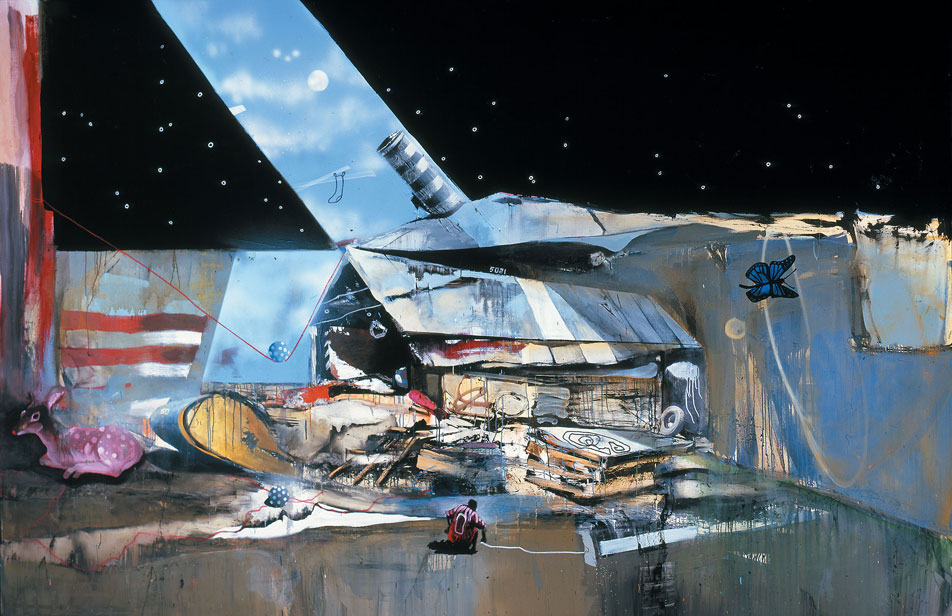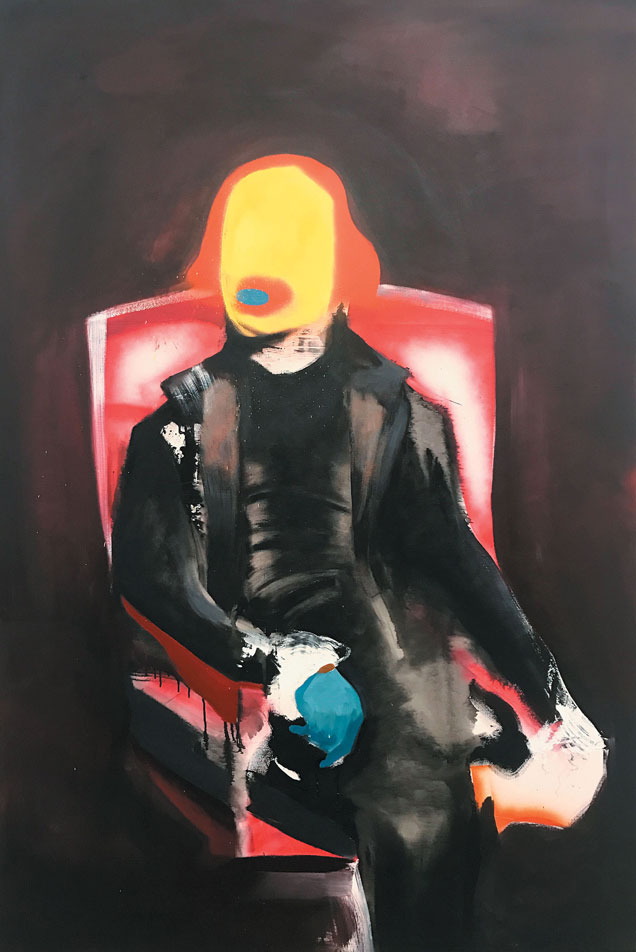In the late 1940s, Abstract Expressionism developed as an aesthetically pure style, stripped of the political content of 1930s Depression-era art, memorably dismissed by Arshile Gorky as “Poor art for poor people.” That attitude persisted until a counter-reaction set in a generation later, launching conceptual and postmodern art, informed by a progressive, critical viewpoint. Those of us who agreed with the politics also, unfortunately, had to concede that decoding the sometimes convoluted intellectual puzzles was like taking medicine, and not user-friendly enough for the “masses.”
Combining sociopolitical content with visual pizazz, however, can be done. John Heartfield’s anti-Nazi photomontages; Anselm Kiefer’s mythic war-torn landscapes; the anti-imperialist paintings of Manuel Ocampo; Käthe Kollwitz’s powerful prints about class oppression and struggle; and Sue Coe’s scathing eviscerations of the industrial slaughter of animals are all passionate and compassionate. Marcus Jansen belongs to this humane, humanist tradition.
The title of Jansen’s show, “Obscure Line Between Fact and Fiction,” evokes our current cultural pathology of “fake news” and “alt facts.” Jansen, born in New York to a German father and an American mother, and growing up in 1960s-1970s Germany, would have had an outsider’s perspective on American history even had he not enlisted in the military for Desert Storm in 1989. After seeing combat and leaving the military after a PTSD diagnosis, Jansen trained in commercial painting in Germany, and began his fine-art career in 1990. Influenced by the freedom, ambition and scale of Abstract Expressionist painting, and convinced that painting was still viable and relevant even as its death was announced by evangelizers who unconsciously imitated the postwar partisans of AbEx, Jansen wrote, later: “I wanted to prove that Painting was not dead.”

Obscure Line Between Fact and Fiction (2010), photo by John Hartford, courtesy of Artists Rights Society.
Mission accomplished. Jansen employs abstraction to explore psychic chaos and conflict, in traditional AbEx style, but in his hands, improvisation opens the valves of feeling (to paraphrase Francis Bacon) and experience; he re-enacts or works through (his words) memories of war in the arena of the canvas, creating enthralling panoramas that pit the terrible beauty of destruction against our conflicting moral sentiments. Pictorial space is inconsistent or ambiguous, as in a dream (or in a damaged building near collapse). Tiny figures wander through the detritus, like the tourists and gypsies in paintings of classical or Gothic ruins by Hubert Robert and Caspar David Friedrich.
Jansen, however, never lapses into melancholic musing; the inclusion of incongruous elements (car tires, pigs, toadstools, soccer balls, numbers and letters, flags) that one might find half-buried in any contemporary disaster scene—from our media smorgasbord of war, famine, pandemic, fire, flood, landslide, hurricane, and drought—lends urgency and contemporaneity to his visions. The shadowy survivors picking through the ruins—soldiers, drawn from memory, as well as figures taken from photographs and paintings—are tragic figures, like Goya’s survivors and victims, but rendered without hyperbole, and all the more affecting for that reserve. While Jansen’s large, epic, contemporary history paintings are dazzling tours de force, his smaller canvases are more personal and less rhetorical, and frequently reminiscent of Francis Bacon and Llyn Foulkes. Jansen might be reviving the moral ethos of 1930s painting for our troubled times.


